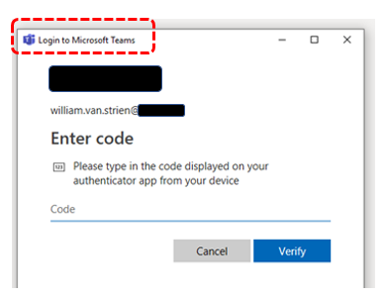Collaboration between organizations in an ecosystem has become more and more essential to the value organizations create. But also in these Business-2-Business (B2B) collaboration scenarios, the authorization principle of 'need-to-known' must be adhered: employees from the partner organizations should only be granted access to the information on which they actually collaborate with the inviting organization. To be able to grant selective authorizations to the externals, requires that each of them must be known with identifying identities in the information system(s) of the inviting company.
In the Azure AD B2B model, Microsoft introduced the notion of 'guest accounts' for this, based on the concept of "bring-your-own-identity". An Azure AD B2B guest account is a lightweight account, that in fact acts as placeholder in the Azure AD context of the inviting organization to external identity managed outside the responsibility of the inviting organization. As such, Azure AD B2B collaboration supports cross-company relationships by enabling partners to selectively access your corporate applications and data using their self-managed identities
Azure AD B2B supports 2 modes to invite external guests via their corporate email addresses: a federation model from the Azure AD of the
inviting organization to the external Azure AD of
invited partner organization. And in the case that the
invited company is itself not (yet) an user of Azure AD for their identity management, via just-in-time created accounts which are then administrated in a so-called 'viral' tenancy (see:
Understand the B2B user).
Guest accounts are created in the inviting Azure AD with their own (external company) email address applied as their guest account / identity name. Azure AD requirement here is that the guest identity name is not yet in-usage as proxy-address within another account in the Azure AD tenant. The typical situation in which this could occur is when an external employee already has also a Member account in the Azure AD of the inviting organization, and has the own corporate email assigned to that Member account. When next you try to create a guest account for that external email, Azure AD refuses with error message: "The user you're inviting already exists in the directory. They can simply sign in into shared apps and resources."
The most pragmatic approach to fix this guest account provision error, is to 'free' the external corporate email address of the 'to-be AAD guest': disconnect it from assignment in the Member account in the Azure AD of inviting organization.
Another apparent feasible approach is to simple select another external corporate email as guest account name: e.g. instead of '
<External>.<User>@>ExternalOrg<.com', provision a guest account via '
<External>.<User>1@>ExternalOrg<.com'. This is certainly a creative alternative. But you need to be aware of some pitfalls with it. 1) Redemption in Azure AD B2B is an email-verified process. Meaning that the alternative corporate email address must actually exist and resolve to an email inbox in the domain of the invited organization. 2) In case of federated Azure AD tenants, the requirement that the proxyAddresses must be unique, is verified in the combination of the Azure AD tenants of
both the inviting as the invited organizations. Resulting that in case to the alternative account in the Azure AD of the invited organization, the original corporate email of person is administrated in the proxyAddresses, then the provisioning of guest account in Azure AD of the inviting organization
still blocks. See
How can we improve Azure Active Directory? - Show the B2B-blocking proxy address in my tenant's logs where this is shortly described.
Code snippet to have run in the Azure AD tenant of the
invited organization, to identify whether and which proxyAddress value is the cause of the blocking:
Connect-AzureAD
Get-AzureADUser -Filter "mail eq '<firstName>.<lastName>1@externalcompany.com'"
-all $true |
Select-Object displayName, @{L = "ProxyAddresses"; E = { $_.ProxyAddresses -join ";"}} |
Export-Csv -Path C:\temp\ReportOutOnAADAccount.csv -NoTypeInformation



